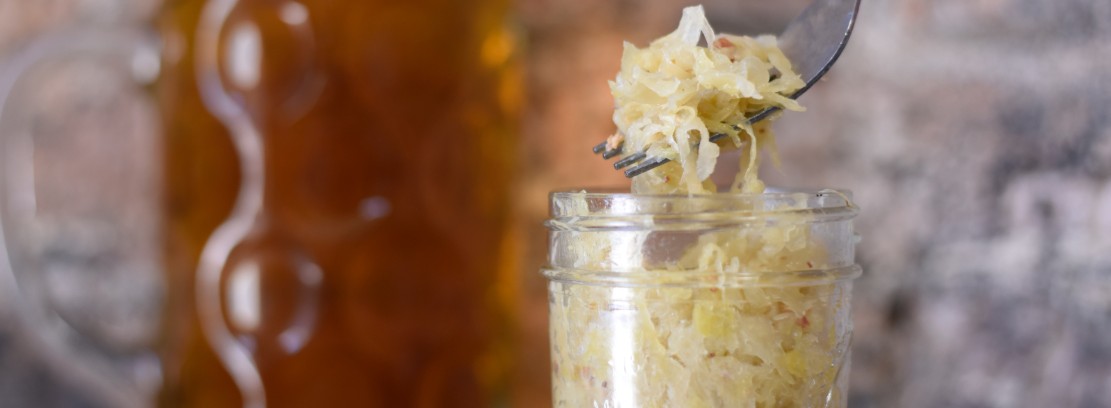Sauerkraut

Cabbage is one of the most commonly eaten vegetables worldwide. It has a high vitamin C content. Cabbage is likely to have been fermented in rice wine in Korea as far back as 37 BC. This is long before James Cook used sauerkraut and citrus fruit to keep scurvy at bay. The red chilli peppers found in Kimchi were introduced in Korea in around the 17th Century.
In Phase II D2D remember to add foods gradually. Adding lots of fermented foods all at once can be lead to a Herxheimer ('die-off') reaction. This is where the microbes in the ferment compete with the microbes in the gut (usually the upper intestine) and cause the microbes in the gut to die, leaving inflammation, bloating and pain. By adding one new food per week, this is less likely to happen.
Ingredients
- Cabbage - 1
- Seasalt/rocksalt
Method
Grate cabbage and put one handful at a time into a container. After each handful add 1/2 tsp of salt.
Push down with pestle after each handful. With a fresh cabbage - water will begin to seep out of the cabbage.
Cover lightly. This is to allow air bubbles out, but no moulds from the air in.
Leave out on the side for 2 days. If the water has not covered the cabbage, add more salted water - 1/2 tsp of salt to around 100ml of water.
Leave for around 3 weeks.
Enjoy!
Variations
Jazz up your kraut by adding carrots, peppers, herbs and spices.
Make sure your utensils are clean before use - this will prevent a bad batch.

